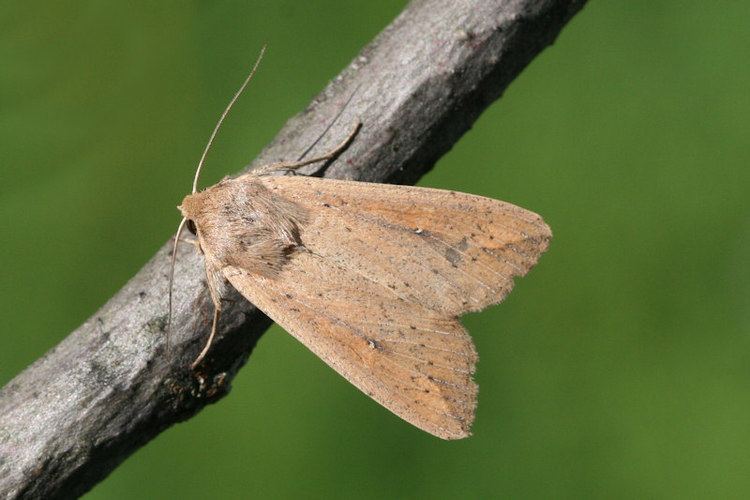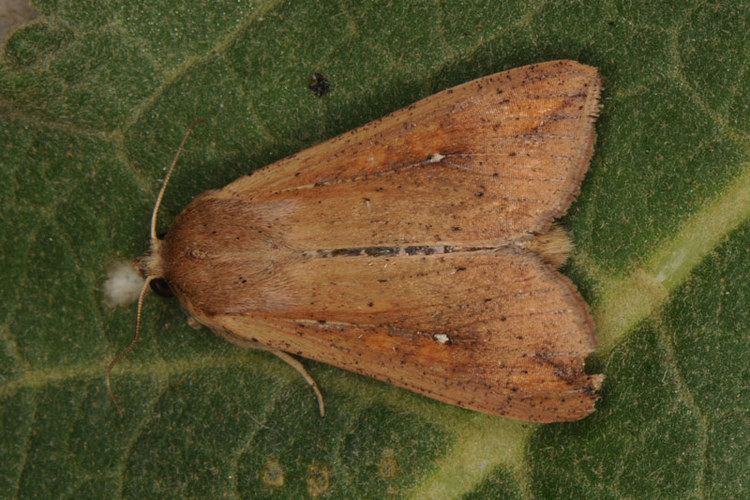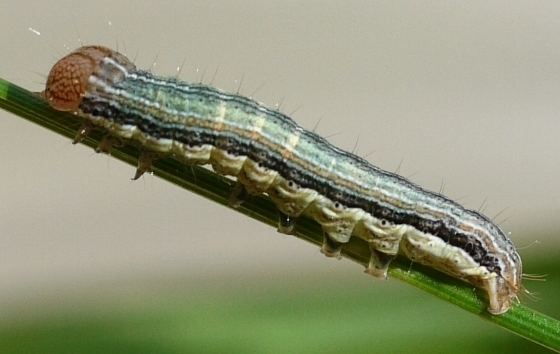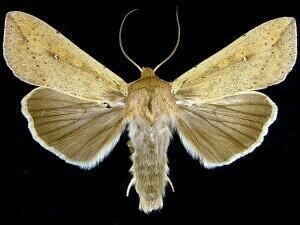Kingdom Animalia Order Lepidoptera Genus Mythimna Higher classification Mythimna | Phylum Arthropoda Family Noctuidae Scientific name Mythimna unipuncta Rank Species | |
 | ||
Similar Mythimna, Insect, Butterflies and moths, Noctuidae, Peridroma saucia | ||
Armyworm moth noctuidae mythimna unipuncta moved by ant
Mythimna unipuncta, the white-speck or armyworm moth particularly in North America, is a moth of the family Noctuidae. It is found in North America, the Hawaiian Islands, in some areas of South America, southern Europe, North Africa, the Sahel region of Africa, Central Asia and Bangladesh to the east and East Africa.
Contents
- Armyworm moth noctuidae mythimna unipuncta moved by ant
- Technical description and variation
- Biology
- Larvae
- Outbreaks
- References

Technical description and variation

The wingspan is 41–48 mm (1.6-1.9 inches). The length of the forewings varies from 18 to 21 mm (0.7-0.8 inches). Forewing ochreous grey, freckled with darker grey, often suffused with rufous: markings obscure; orbicular and reniform stigmata pale or yellowish, the latter with a white dot at lower end; an outer row of dark dots on veins, joined by a dark streak from apex; hindwing fuscous grey, paler basewards, the veins dark.
Biology
The white-speck is a migrant species, recorded in most months, but most frequent between August and October.[1]

Larvae are green to brown, freckled with darker; the lines are obscure; the dorsal line is almost lost in a dark clouding; subdorsal lines are plainer, with the upper edge diffuse; the lateral and spiracular lines are white. The larva feeds on various grasses, especially bermudagrass.
Larvae

The larva of Mythimna unipuncta is known as the "true armyworm" or "common armyworm" and is a major agricultural pest in North America. Armyworms feed on Gramineae, which includes weedy grasses, as well as important crops such as hay, barley, corn, millet, oats, rice, rye, sorghum, sugarcane, and wheat.
Outbreaks
Outbreaks of common armyworm swarms are not uncommon.

In the United States, the western regions of New York experienced an outbreak of common armyworms around May 2012. While the infestation remained fairly localized, it had a significant impact on local agriculture and farming. Armyworms spread in great numbers to Illinois, Tennessee, Kentucky and Montana in the fall of 2012.
- ^ The flight season refers to the British Isles. This may vary in other parts of the range.

